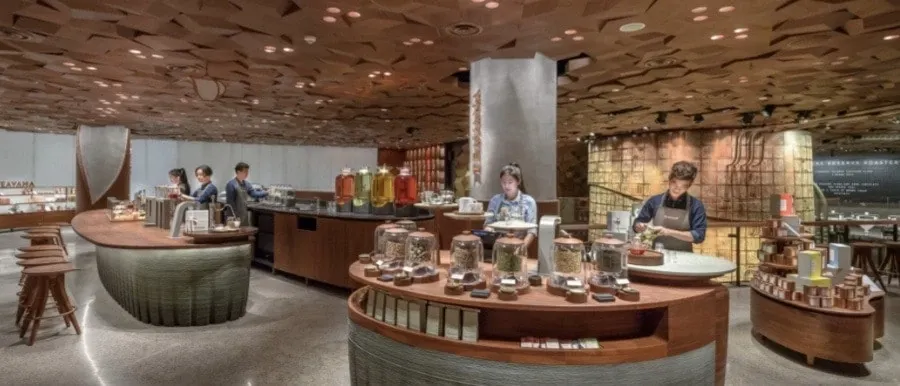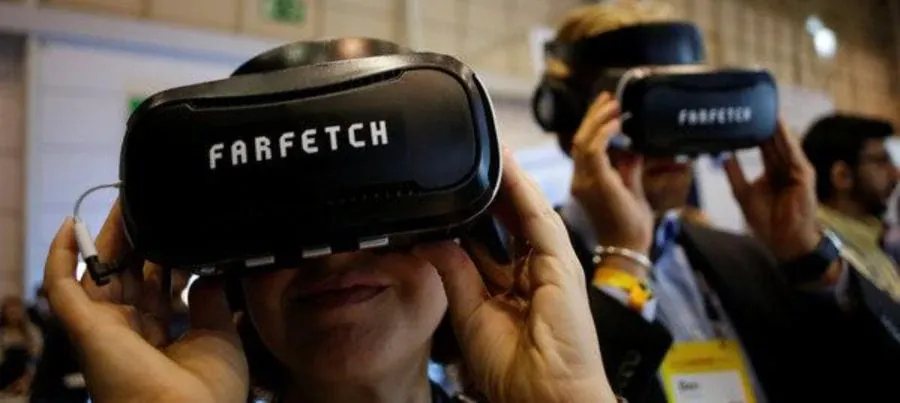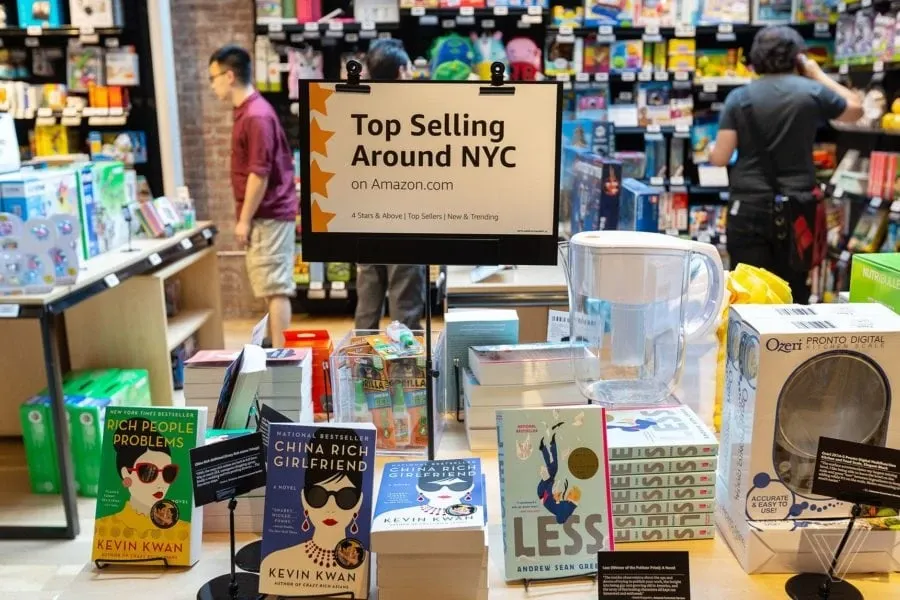My Innovation Radar 2018 – Part 3, Chic and Mortar Retail

We have all witnessed how digital has transformed the retail market all across the planet. At first e-commerce, then Amazon and Alibaba platforms, then even more new entrants, more recently everyone is trying to jump in social media such as Instagram (courting young trendy « influencers »), etc. The consensus was that eventually this was not about being a prominent online force anymore nor about offering a fantastic offline experience, but both. The 2017 mantra was O2O or Online to Offline and pretty much everyone agreed to the vital necessity of being able to smoothly drive customers back and forth from an ‘O’ to another. This was all fine and (maybe unexpectedly) I agreed 100% with this trend. But to be self-critical with the idea, what started to surface is that we have maybe missed something far more subtle and game-changing. I call it Chic and Mortar Retail.
3. Chic and Mortar Retail
Chic and Mortar is about how while retail is getting better and better at streamlining all operations with digital tools (think Amazon Go cashless stores), new layers of high-value, tailor-made or plain luxurious services are offered to consumers.
The first signal that started to speak to me was when I saw Alibaba start to expand Hema (Hema Xiansheng). This network of cashless stores focused on fresh products (the most difficult to process automatically) started with already 30 locations in China, up to 60 at the moment. So we’re not talking about an Amazon Go prototype shop, but real life operations.
The really impressive thing though that caught my eye, was that Hema shops have on-premise chefs who can cook what you buy by walking and scanning with your phone, while you finish your shopping tour. They also have an incredibly effective 30 minutes delivery operations of anything you shop online (remember: fresh products).
While we could pause and be legitimately impressed at how fast Alibaba is moving ahead of Amazon in cashless automation on fresh products (live wet crabs are way harder to deal with than dry boxes of cookies), I think we’d be missing the point: making the shop run with as few employees as possible to serve customers on typical operations makes other employees available to offer high-value services. The brick and mortar operation sufficiently digitalized, and the cost structure reduced to minimum, the premise and the team can be made available to create new added-value options. In term of business model it is amazing to see how as an end result, a very classic business finds ways to invent new forms of up selling « boring » products.
And there are even more interesting things about Hema strategy that you might want to follow up here.
Another striking example might be Stitch Fix that is another try at matching consumers with a personal shopper. If Stitch Fix is far from being the only player at that game in the market (we have Trunk Club, Dia & Co, Wantable, Inc, PS Dept., Luxury Garage Sale, …) they are at the moment the only one on NASDAQ with a $1.2 billion valuation. Do what you want with the number, but there’s something worth understanding which does check the ‘chic and mortar’ box.
Making personalized high-value services available at the click of a button have been tried by many entrepreneurs before, but they would end up crashing down in flame. If Stitch Fix pulls it off at scale, they will have written a new page in the retail playbook. And what I believe is interesting in term of business model is that they have theorized how to be the Uber of their category. I know that being ‘the Uber of X’ has become a stupid hat that too many startups have when they pitch their business, but Stitch Fix does pull it off by subcontracting the high value part of their business (style recommendations) to freelancers and part-time workers (the drivers in Uber model):
This is quite another take from Hema, at the Chic and Mortar strategy, but in essence it’s also about solving the conundrum of bringing a high value experience within the cost structure of a typical (if well digitalized) retail business.
These examples in fashion and even luxury e-commerce platforms are numerous. There is a backstage war ramping up on what could be brought as added services to online customers. Last year, Yoox Net-a-Porter introduced “You Try, We Wait”: a same-day premium delivery service with at-home shopping consultations that allow you to get some items delivered by a « personal » shopper, so that you can try them without dealing with repacking and sending back what you don’t want.
Nordstrom has launched in Los Angeles Nordstrom Local, where the brand offers no goods. Just stylists, tailors, manicures, a juice bar, and a drop point for online purchases and returns. This is a clear echo to Angela AHRENDTS repositioning Apple stores as « town squares » saying that « We don’t call them stores anymore. »
By opposition, Nike who is launching another digital concept store this time in SoHo, New York, is just missing out on the high-value strategy I describe. Minding the fact that they have a powerful data-driven operation and an exemplary solid O2O strategy, they actually don’t go the extra mile and don’t offer real high-value services.
This is making the case on how even being a leader in digital, branding and retail, with fantastic flagship stores on par with Apple ones, doesn’t cut it anymore. For the customers, this is just more of the same thing. An acute version of the innovator’s dilemma? Probably so.
I talked in another article on how Starbucks Reserve was also reinventing the flagship store with a lot of care and value offers for the customers, while also blending in young, modern local designer brands. This creates both a sense of high-end service and trendiness that you wouldn’t expect from an industrial coffee and pastry maker.
A few months later it was announced that Nestlé signed a $7.15 billion deal to get the right to distribute the Starbucks brand, even in its Nespresso stores. Which is in my book an abdication of the inventors of coffee as a luxury ‘what else?’ experience, to the US giant.
Why is it important to understand this trend now?
Because the answer to how to save retail from digital is not in-store VR headsets or blockchain.

It’s not either about saving retail from digital. Digital is now as pervasive as electricity. Just start to think past it even if your CRM is dated, your inventory systems not connected together, and that your sales team think that just showing up to open the store in the morning and being polite to customers is enough.
This is my case of jump-frogging digital and immediately pushing to the step where you actually might have a chance to beat Amazon and the cohorts of other e-retailers.
What to look for in the next few months?
What I labeled the Chic and Mortar trend might well start to propagate into banks, insurance, car dealerships, and other typical B2C operations. I’d be curious too to see what differences we are going to witness between the US, Europe and China. How different cultures are going to embrace different aspects of the high-value service spectrum.
Next Part…
The fourth part of my innovation radar will be on the current dynamic where we have companies like Douyin, Fortnite, or Kylie Cosmetics that are appearing out of seemingly nowhere to dethrone prominent leaders out of their position. In a market where we thought that the GAFA and BATX were above everyone else and entrenched behind deep competitive moats, we might start to realize that the disrupters are still quite disruptable. I call this other trend the Outsiders Outbreak…
[ Edit – July 26, 2018 ]Walmart gets in the game by testing out to take care of « chauffeuring » customers to store.
https://t.co/vFVEe3nheqpic.twitter.com/BPCUUXbVqsJuly 26, 2018
[ Edit Aug. 7, 2018 ]The magic of HEMA starts to percolate in the West…
pic.twitter.com/jKzB3v12YjAugust 6, 2018
[ Edit Sep. 29, 2018 ]


